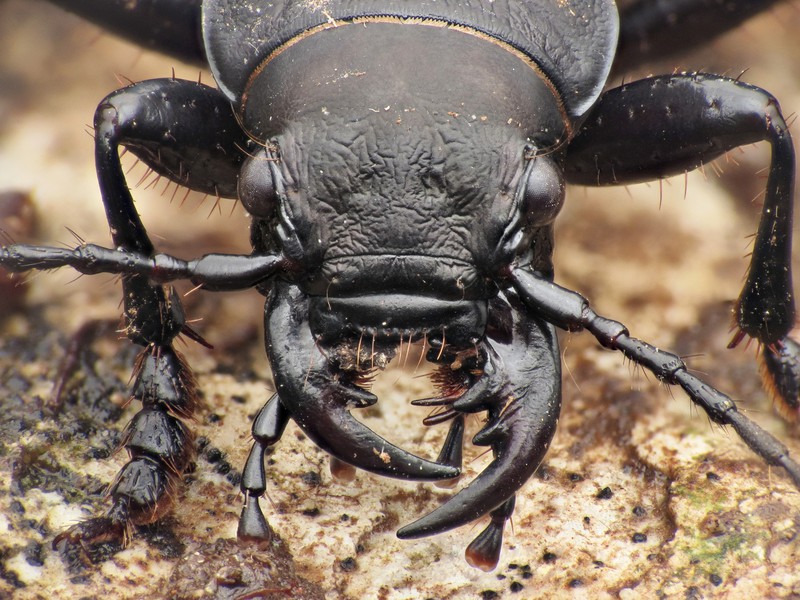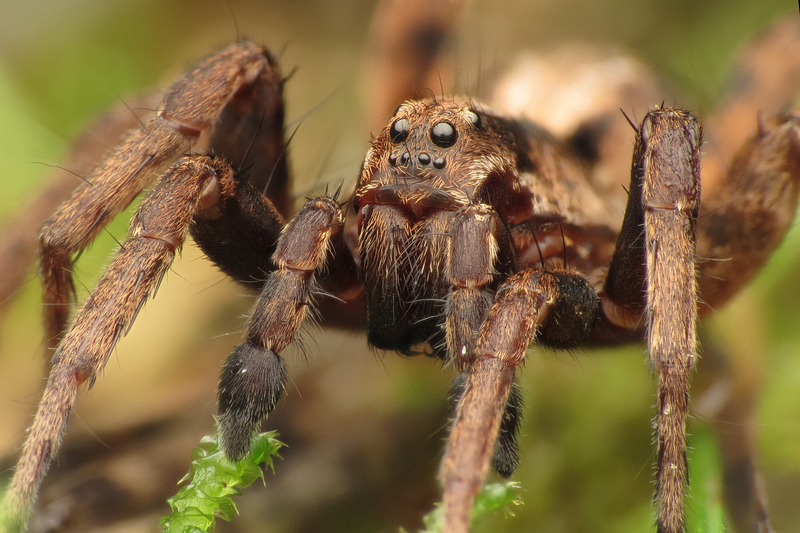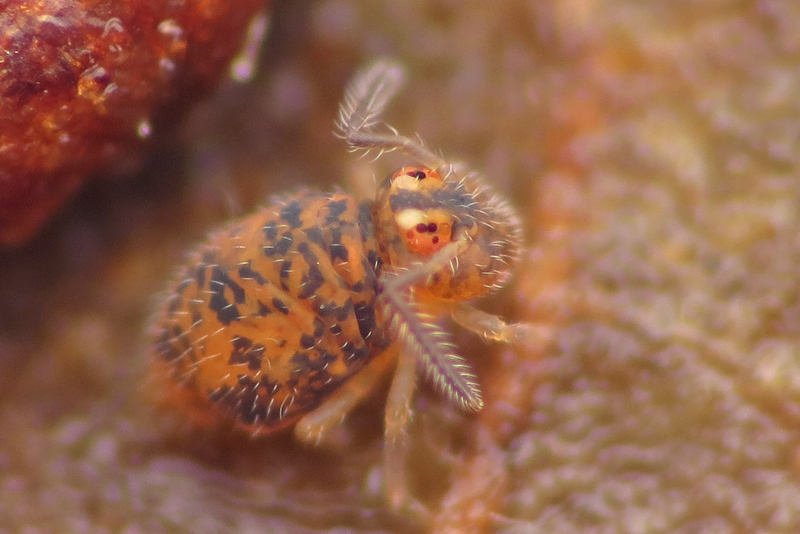TAGS: WHERNTO: erudite techniq

… and they are still there!!
Undescribed sheetweb spider (Linyphantes sp.)
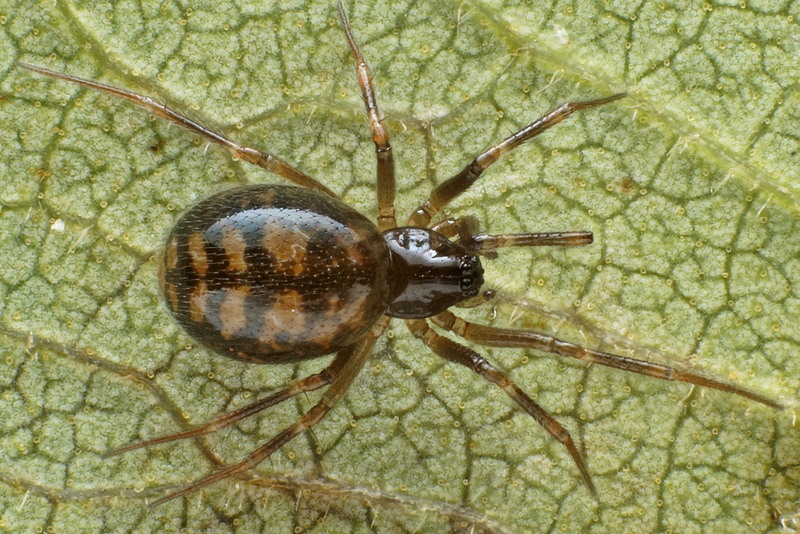
This is a tiny (a little over 2mm in body length) sheetweb spider in the genus Linyphantes. Like many sheetweb spiders, her species builds small, flat webs in leaf litter, under moss, and in other damp locations. As of yet, her species has not been formally described.
She, along with many of the other spiders in this gallery, was kindly identified by Rod Crawford, curator of arachnids at The Burke Museum.
More photos of her on BugGuide.
Snail & springtail
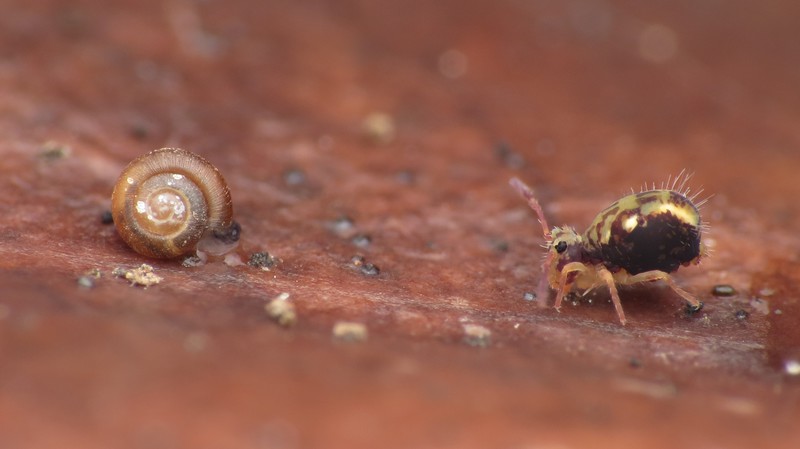
A cute little snail and springtail meeting on a fallen leaf.
Snout mite (family Bdellidae)
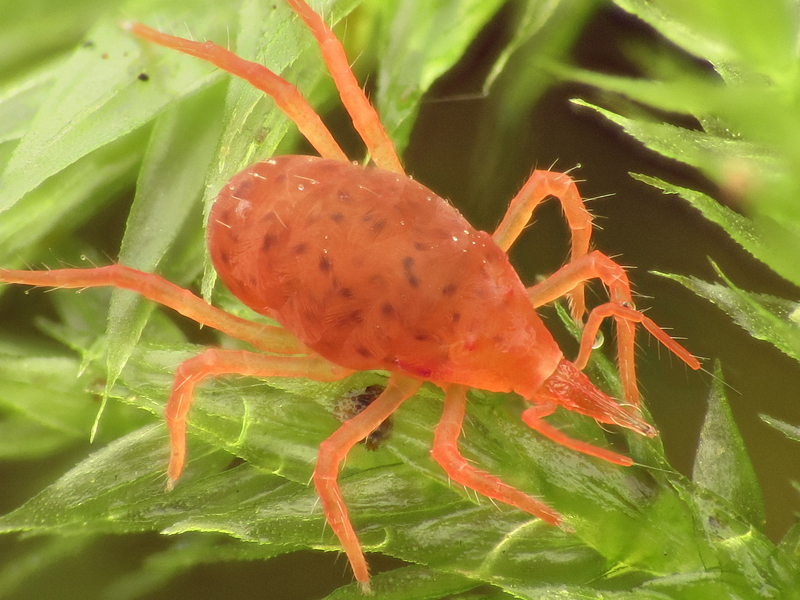
Few mites are willing to sit still for a photoshoot, so I was grateful this one was patient enough to let me get a fairly deep focus stack. Snout mites are predatory, feeding on springtails and other small arthropods.
Greater Night-stalking Tiger Beetle (Omus dejeanii)
Little springtail (Sminthurinus henshawi)
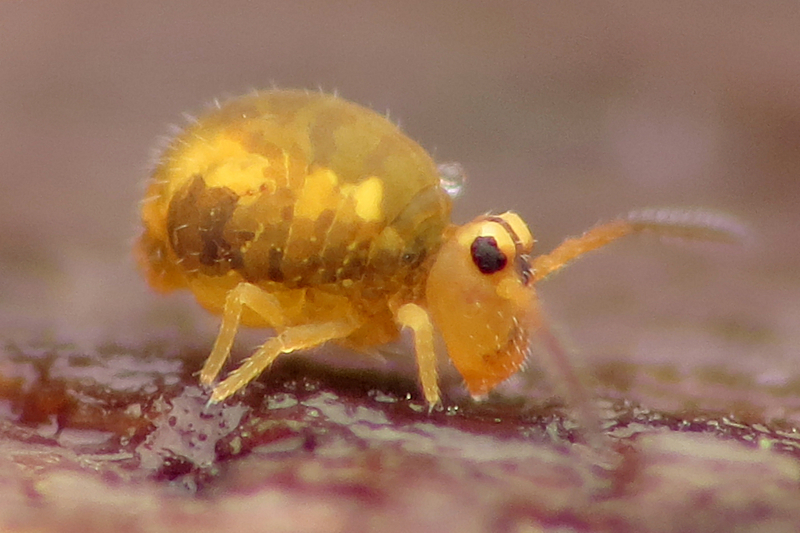
Another cute little springtail, just over half a millimetre in length.
More shots of it on BugGuide.
Tiny dwarf spider (Tachygyna vancouverana)
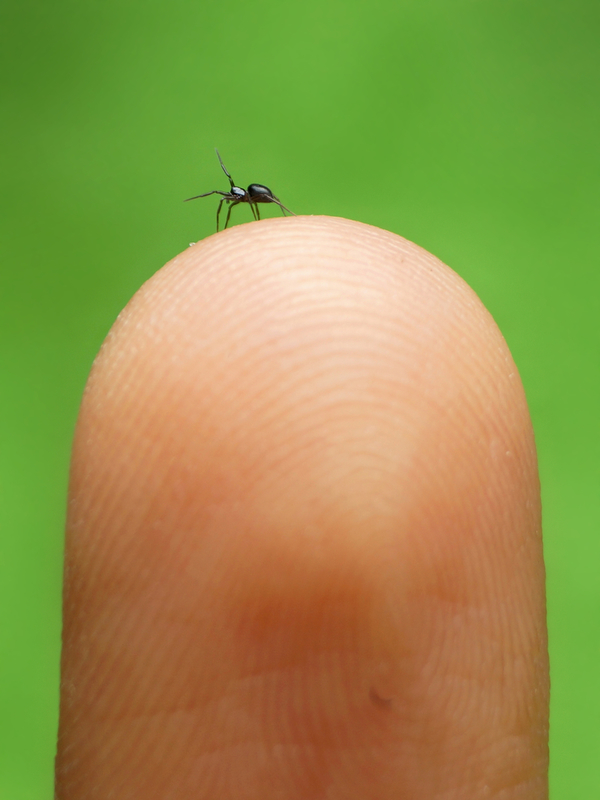
Another tiny spider, less than 1.5mm long. I rescued her from a shallow puddle where the surface tension was too strong for her minute legs to break free from. Here, she's exploring the tip of my index finger.
More shots of her on BugGuide.
The Pseudoscorpion King
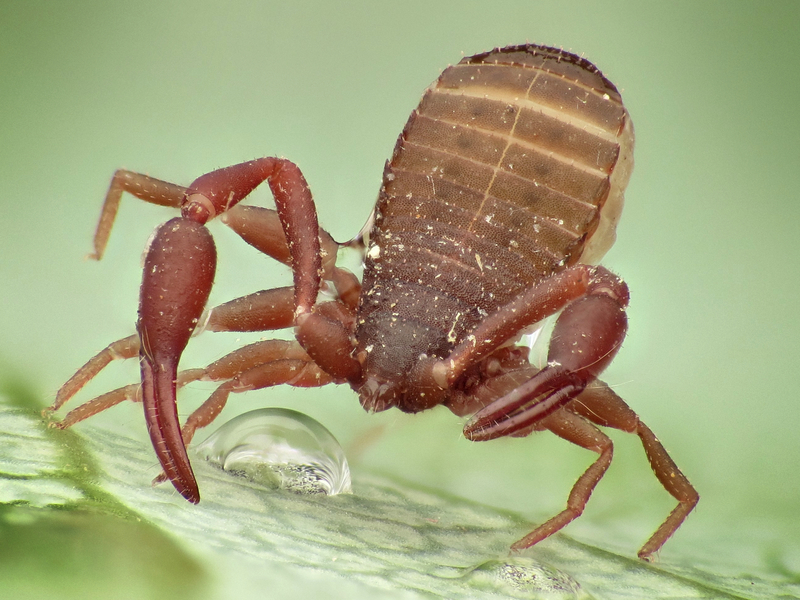
I'm always on the lookout for pseudoscorpions, but for some reason they're incredibly scarce here. This guy was found on the wall of one of our rabbit houses, picking his way through spider webbing. He was very cooperative, holding this pose for almost ten minutes.
Pseudoscorpions tend to be harder to identify than spiders, requiring, among other things, examination of the distribution of microscopic hairs on various parts of their bodies. Nevertheless, after much photographic effort (and patience on his part), I'm fairly sure he is a male Chelifer cancroides, a common and widely distributed species.
More shots on this BugGuide.
Wolf spider (Alopecosa kochi)
Callobius severus
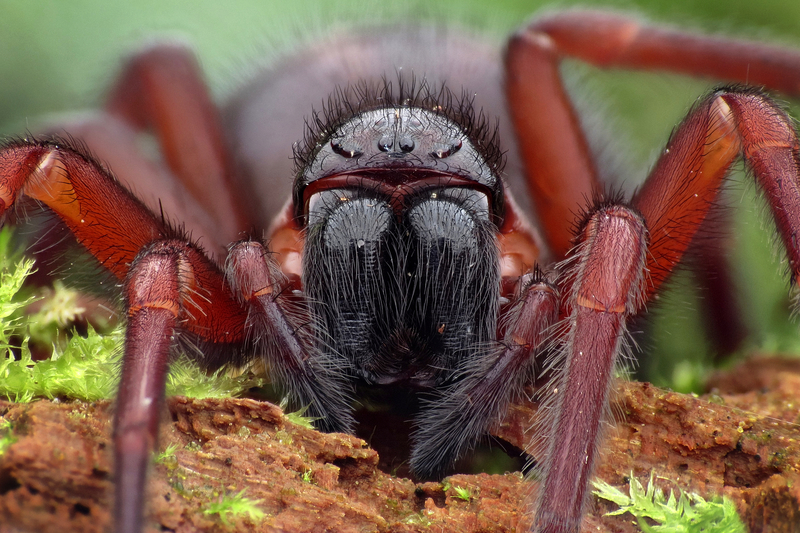
Callobius severus is a common spider in the Pacific Northwest, typically found in wooded habitats. They do well near human habitation too and are plentiful near the house. This gigantic female had a web behind a piece of wood on our side deck.
More shots of her on BugGuide.
Robber fly (Eudioctria sp.)
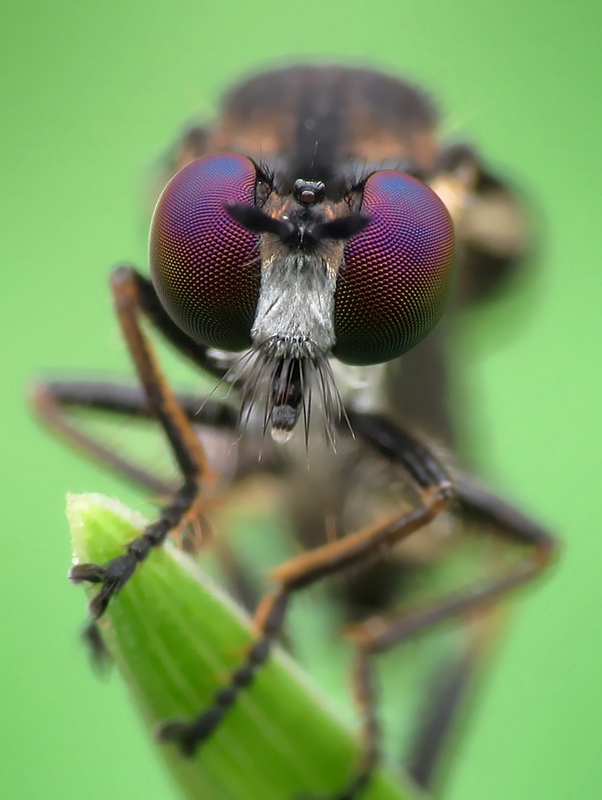
This is the first robber fly I've had any luck photographing. Very colorful eyes! Robbers are predatory flies, snatching just about anything they can overpower out of the air.
More shots on BugGuide.
Carapace of a ghost spider (Anyphaena pacifica)
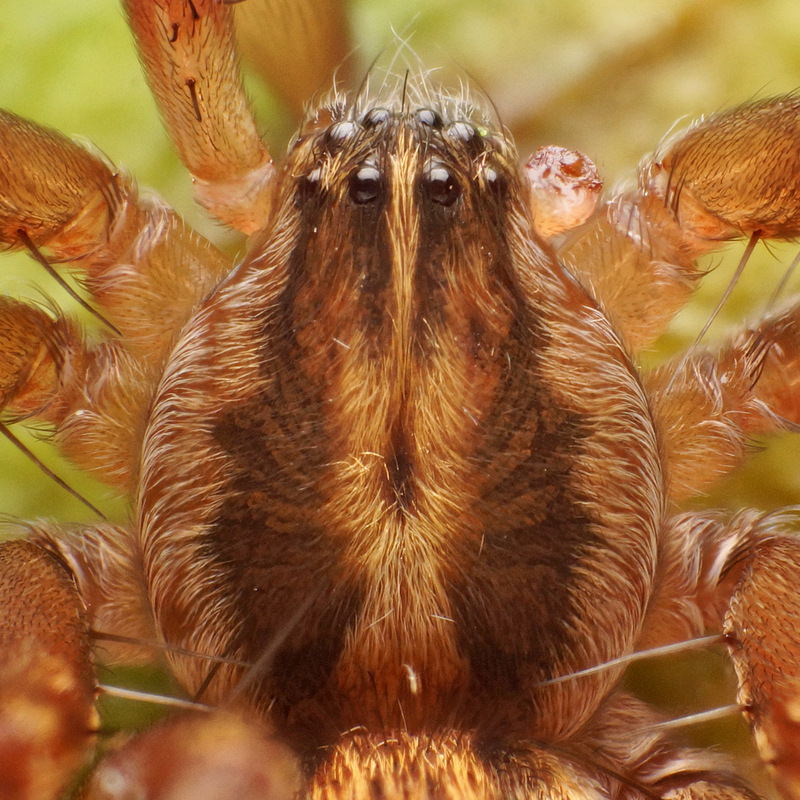
The elegant carapace of a young male ghost spider.
Woodlouse Hunter (Dysdera crocata)
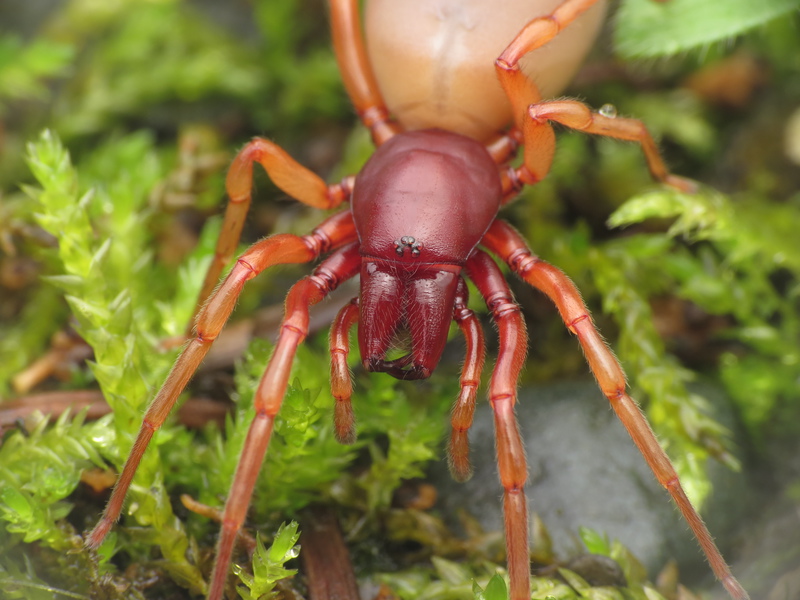
Moderately large, tubular spiders, Woodlouse Hunters live under logs, bark and similar damp places where their preferred woodlouse prey is likely to be. Dysdera crocata is the only species of its family in North America where it's easily identified by its impressive jaws and fangs.
Sheetweb spider (Linyphantes victoria)
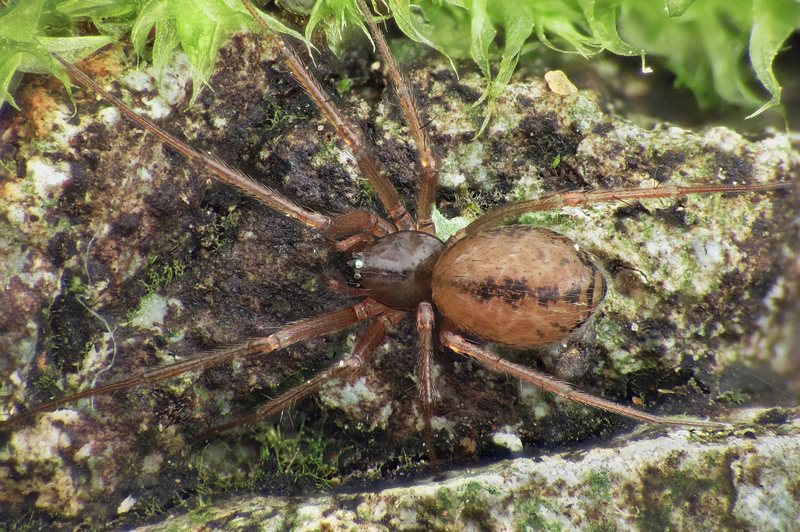
- victoria is one of the most common sheetweb spiders in the yard. They vary so much in coloration that you really can't recognize them based on appearance alone.
Another L. victoria on BugGuide that is much darker.
Female Cybaeus eutypus
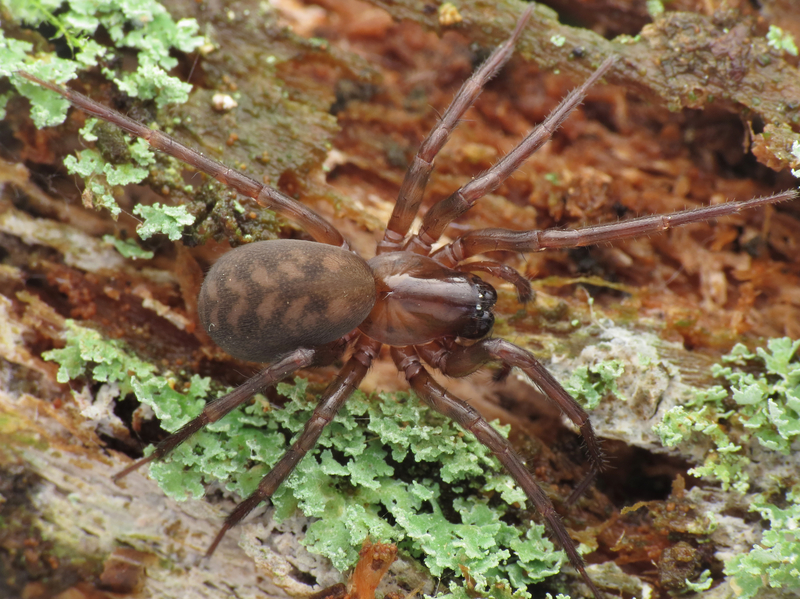
Members of the genus Cybaeus are common ground-dwelling spiders in forests of the Pacific Northwest, living under rocks, logs, and in other damp places. Many sport elaborate patterns on their carapaces and abdomens.
Elongate-bodied springtail (Isotomurus palustris)
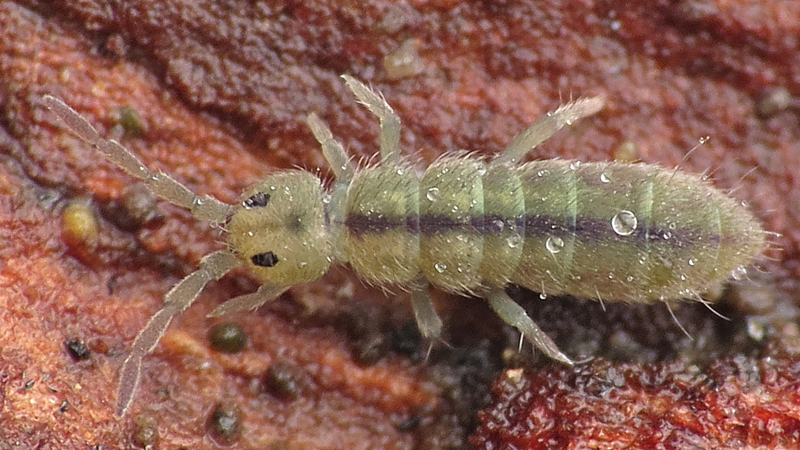
Another type of springtail. These ones are pretty fast runners.
Small orangy springtail
Giant House Spider (Eratigena duellica)
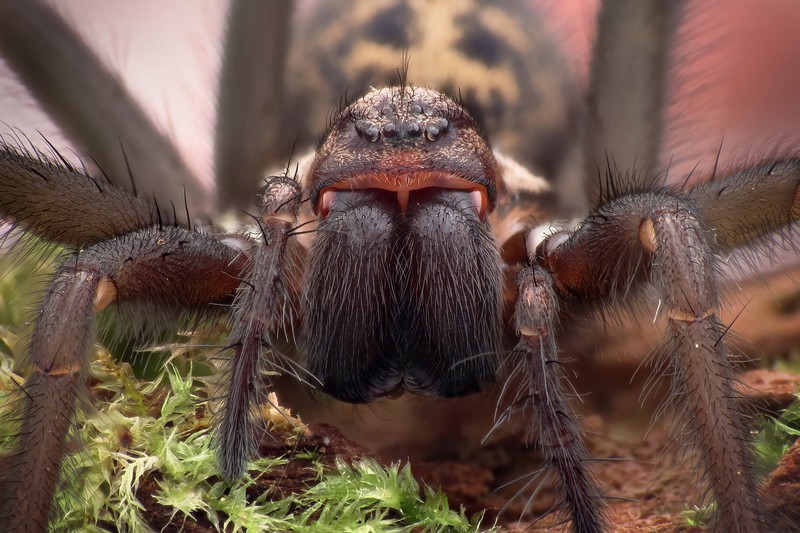
This gentle giant was out on a nighttime stroll in the rabbit enclosure. Giant House Spiders are fairly common funnel weavers in the Pacific Northwest (also in Europe), and are among the largest spiders in Canada.
More shots of her on BugGuide.
And also a big male of the same species.
Small jumping spider (Neon reticulatus)
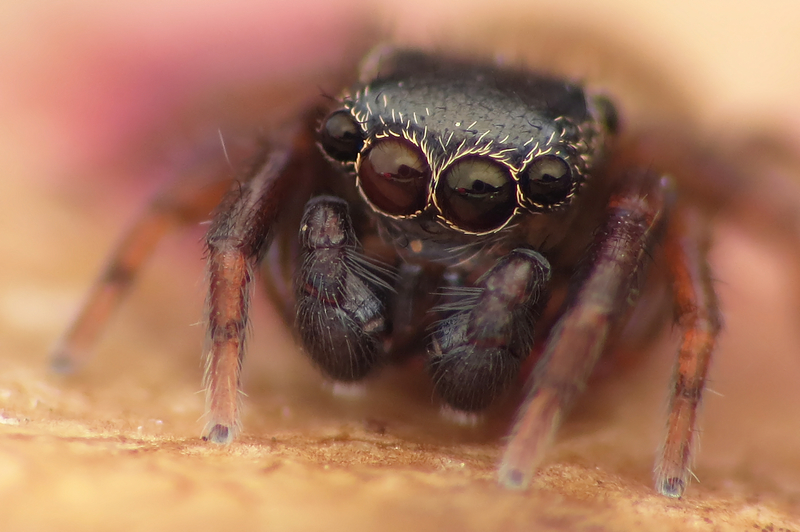
While most jumping spiders happily roam in broad daylight, members of the genus Neon prefer the cover of darkness, hiding in long grass and leaf litter. Their eyes are quite large for their size to help them see in their dimly lit habitats.
More shots of this male on BugGuide.
Dwarf spider (Mermessus trilobatus)
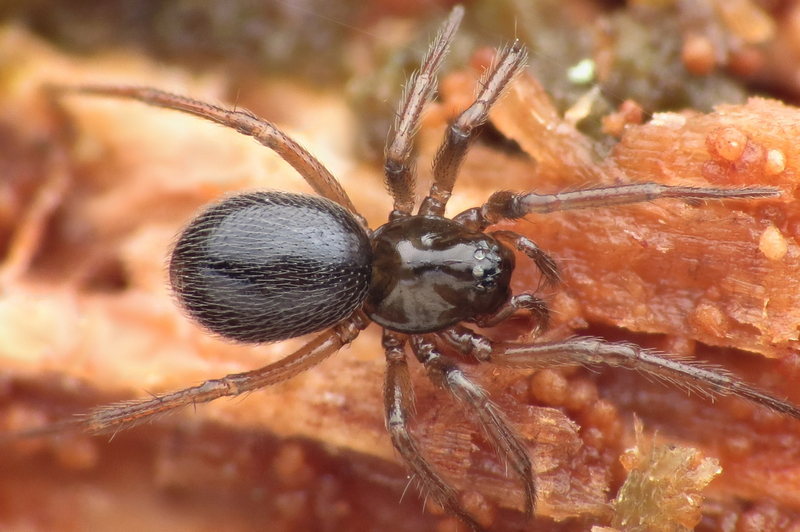
A cute little dwarf spider, about 2mm long.
Little pseudoscorpion (Apochthonius sp.)
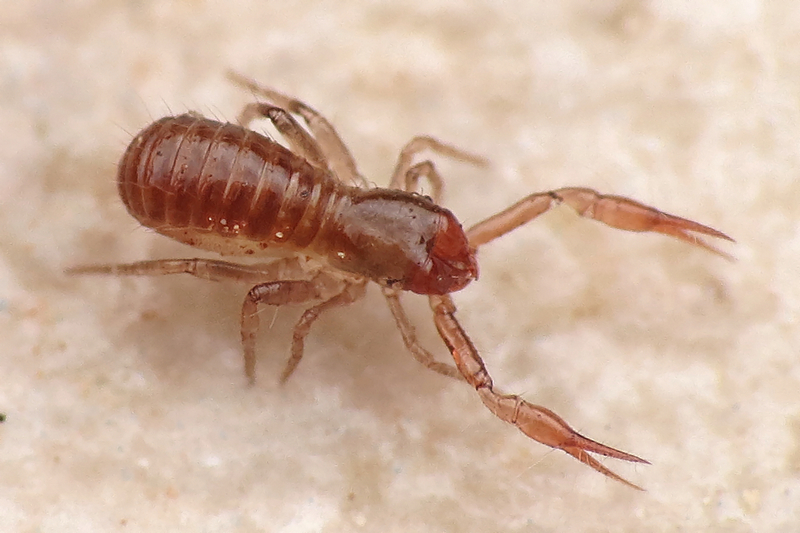
Here's a tiny pseudoscorpion I found while sifting forest litter. It's a little over a millimetre long. I don't have the equipment to get clear shots of stuff this tiny, but from the images I did take I suspect it is in the genus Apochthonius.
More shots on BugGuide.
Large folding-door spider (Antrodiaetus pacificus)
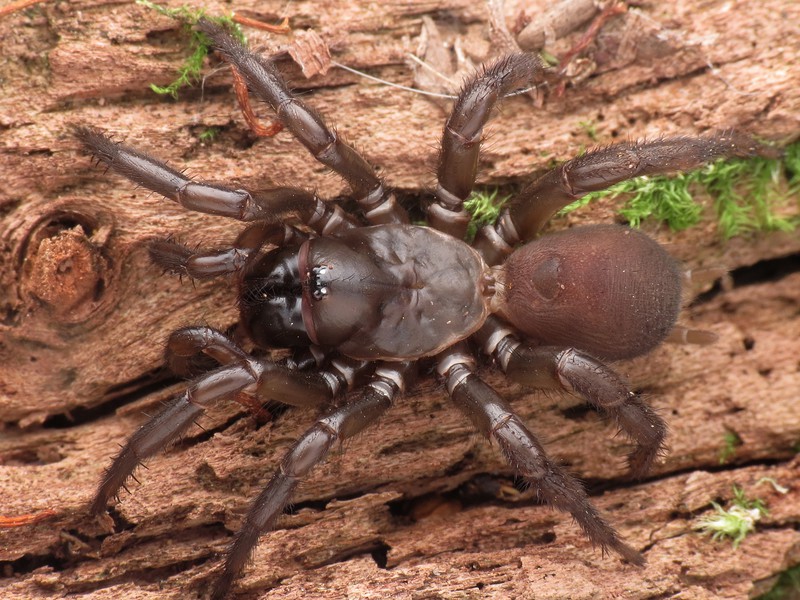
These impressive spiders make silk-lined tunnels in loose soil and debris, coming up to the entrance at night to wait for prey. They are mygalomorphs, more closely related to tarantulas than most commonly noticed spiders.
Damselfly
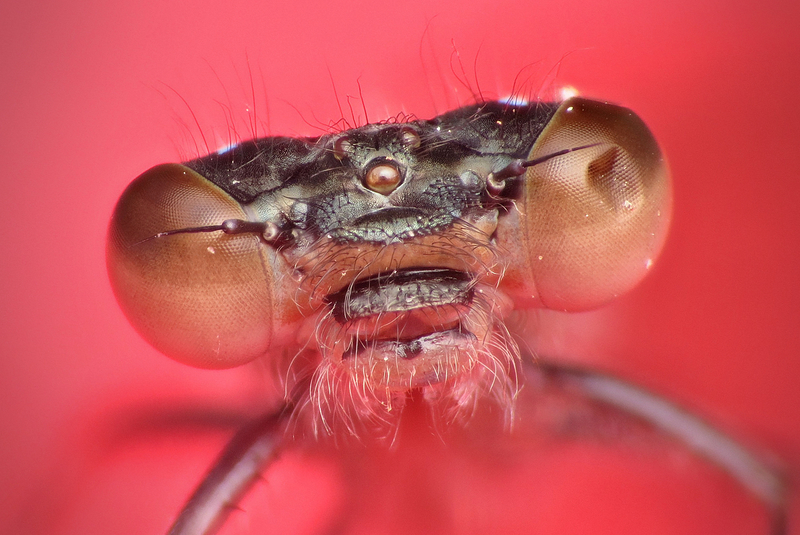
This battered old damselfly landed on my leg while I was trying to photograph a jumping spider. After a brief rest, it took off into the bushes.
Cobweb spider (Platnickina tincta)
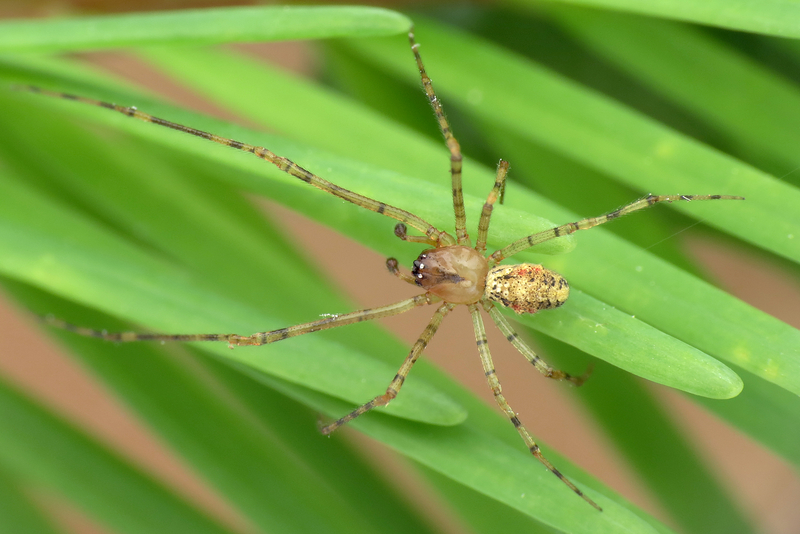
- tincta is very common in the yard. This male somehow wound up indoors, which is unusual for one of them.
More shots of him on BugGuide.
Wolf spider mother and young (Pardosa vancouveri)
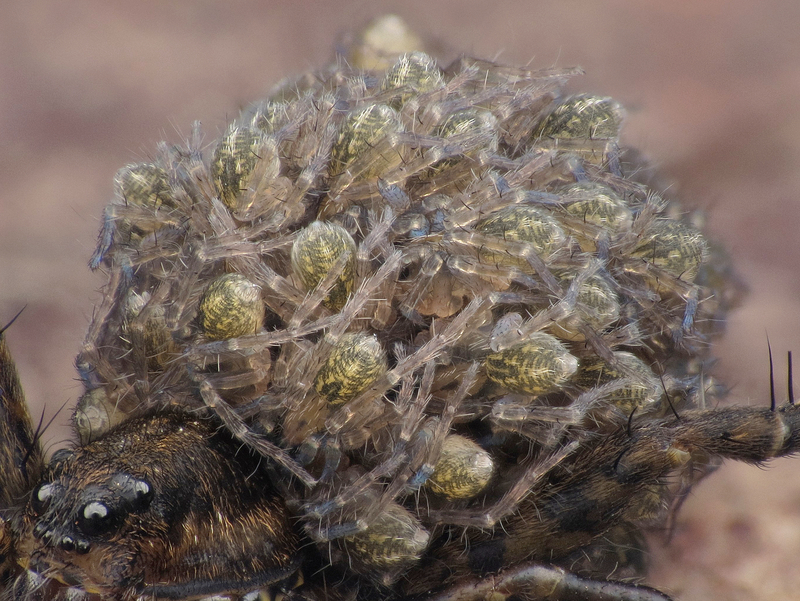
Wolf spider mothers go to great lengths to care for their young. Their egg sacs are made from several layers and kinds of silk, protecting the eggs from water, impacts, and other hazards. Once made, the mother will attach the sac to her spinnerets and carry it around wherever she goes. When the spiderlings emerge, they climb onto her back and secure themselves with silk. She continues to carry and protect them for some time before they eventually disperse.
Wolf spiders have very good vision and can be hard to photograph. Understandably, they're especially suspicious of photographers looming overhead whilst carrying young. I approached this one very slowly. It took several minutes to convince her I wasn't a threat and get close enough to photograph her.
Emerald mite
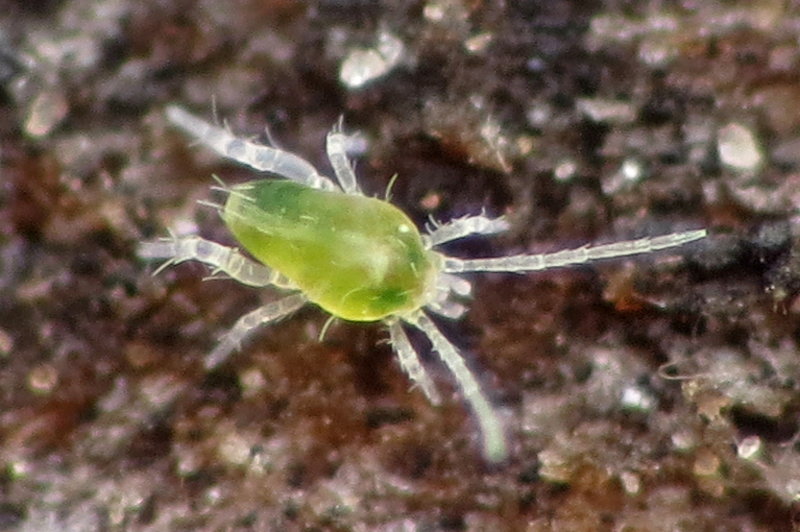
Here's what happens when you point a camera at a barely visible speck racing around on a rotting log! This brilliant green mite in the family Eupodidae is only a third of a millimetre long.
Xysticus crab spider
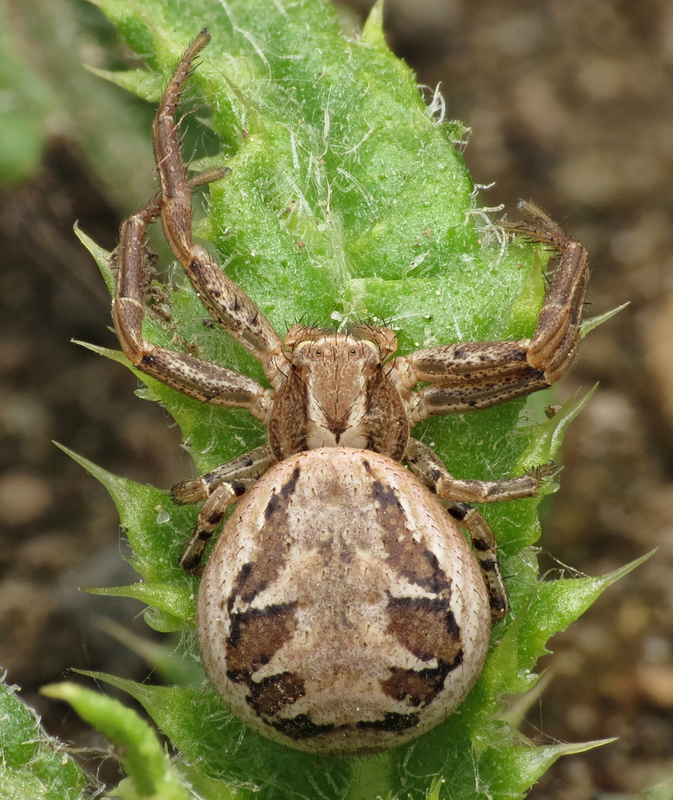
Crab spiders in the genus Xysticus often have fancy abdomen patterns.
More shots of this large female on BugGuide.
Stone-like harvestman (Ortholasma pictipes)
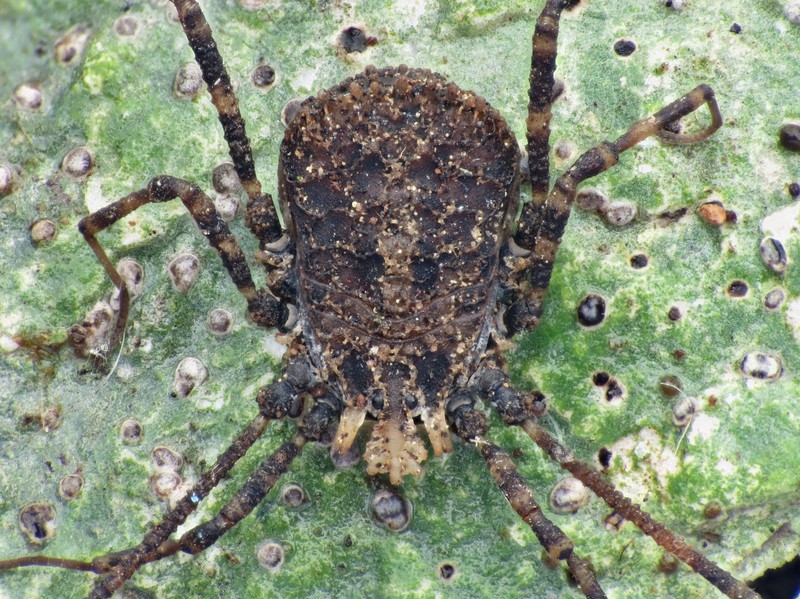
Harvestmen in the family Nemastomatidae can be quite astonishing in appearance. O. pictipes has a hard exoskeleton with a stony texture along with a peculiar projection in front of the eyes.
More photos of this female on BugGuide.
Jumping spider (Phidippus johnsoni)
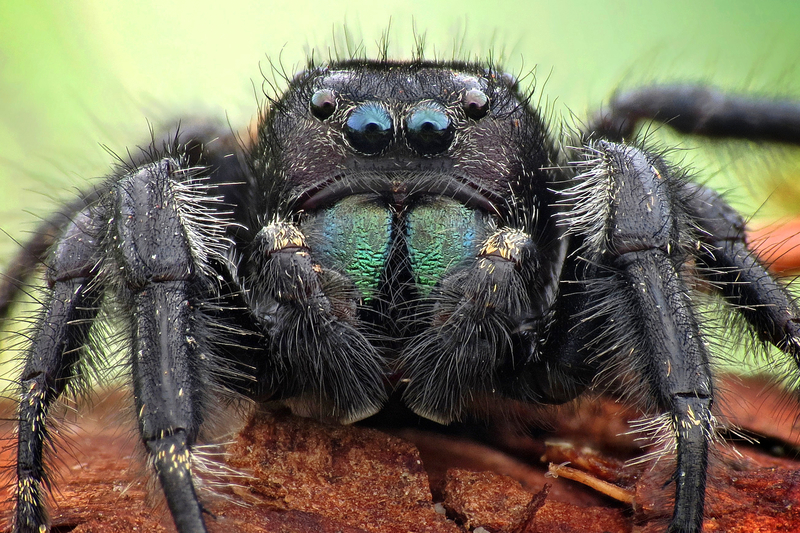
This friendly jumping spider spent most of his photoshoot scampering around trying to investigate everything around him all at once. It wasn't easy to convince him to face the camera. Not that it did much good when he did - he would often leap straight at the lens before I could shoot! Maybe he was trying to make friends with his reflection.
Jumpers have superb vision and are extremely curious. If you put your hand near them, they will often hop on for a chance to explore.
Members of the genus Phidippus are notable for their large size and bright, iridescent chelicerae (jaws). P. johnsoni have a red (sometimes orange) and black color scheme to mimic certain velvet ants. Velvet ants can deliver very painful stings, so it benefits the comparatively defenceless spiders to look like them to fool potential predators.
More shots of this fellow on BugGuide.
And a shot of his stunning chelicerae on Flickr.
Tiny globular springtail (Sminthurinus niger)
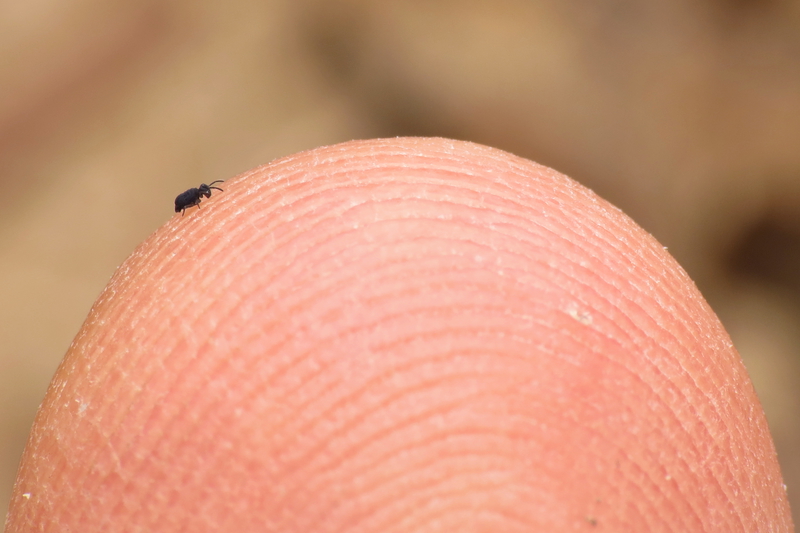
I found this minuscule springtail on the lid to our recycling can. Frans Janssens, a springtail expert who runs collembola.org, was able to identify her as Sminthurinus niger (from a photo of her rump, no less). The first verified record of the species from the Nearctic ecozone.
More shots of her on BugGuide.
Red dwarf spider (Walckenaeria auranticeps)
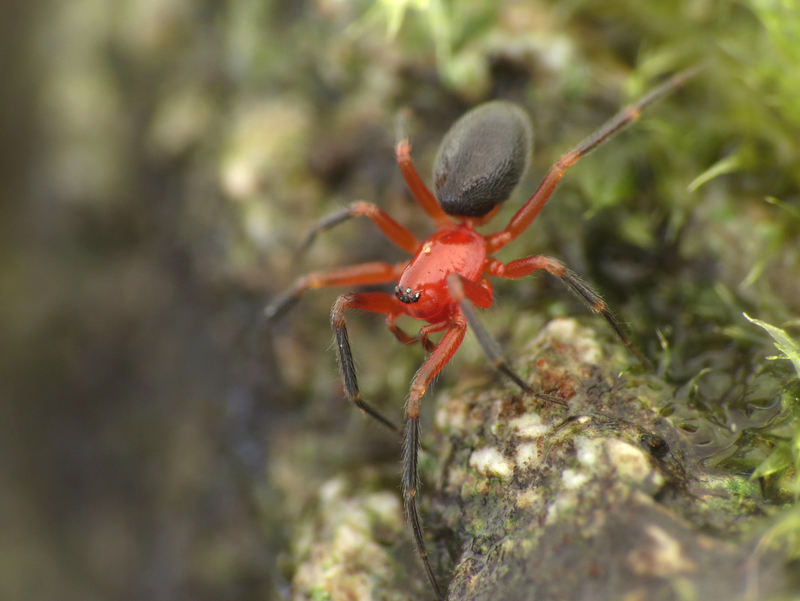
Although this spider was less than 3mm long, her bright red carapace and legs made her easy to spot against the green moss I found her in.
More shots of her on BugGuide.
Cobweb spider (Theridion sp.)
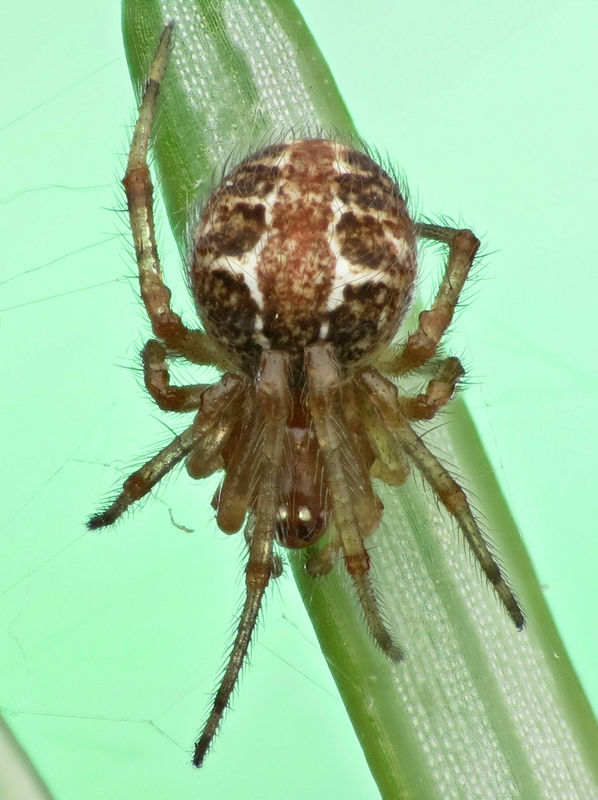
Spiders in the genus Theridion are usually small, with a distinct stripe down the middle of their abdomen.
Globular springtail (Dicyrtomina minuta forma saundersi)
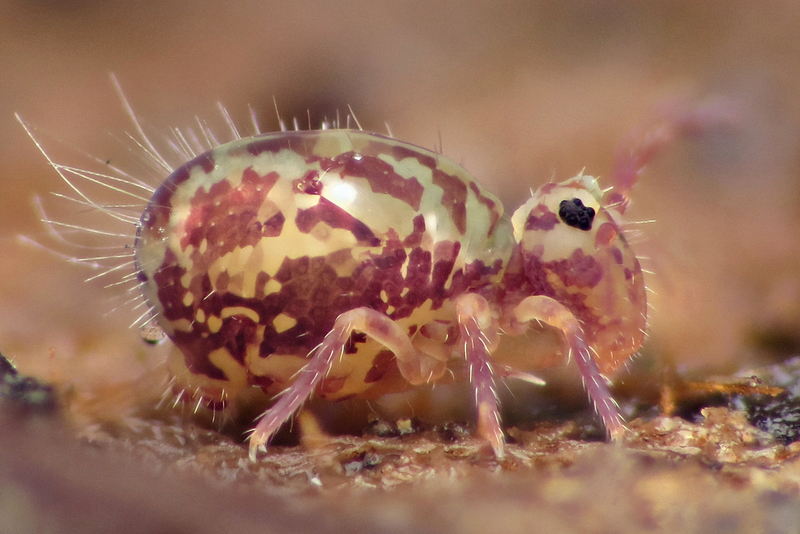
A spectacularly patterned globular springtail!
Domestic house spider (Tegenaria domestica)
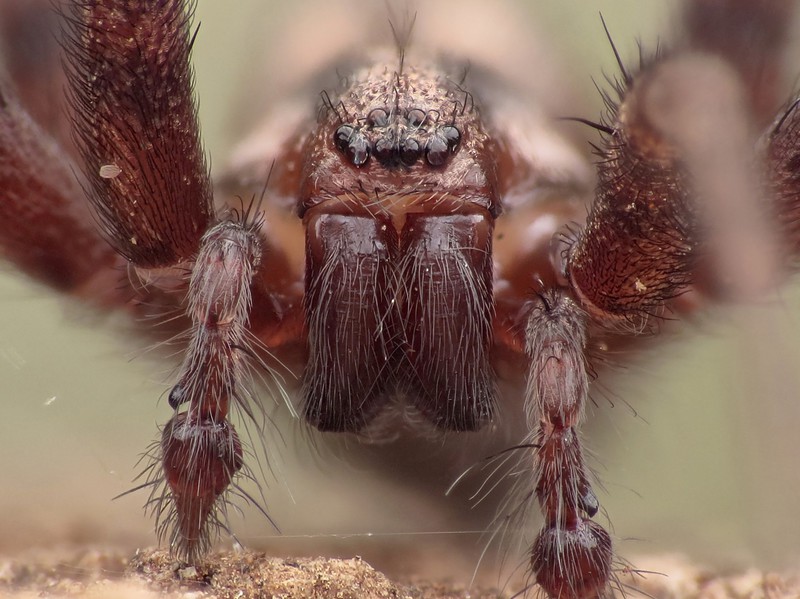
Domestic house spiders have become distributed all over the world thanks to human activities, frequently living in and around houses. They're medium-sized, agile spiders that spin funnel-shaped webs in dark, undisturbed places.
Like many other species in their family, they're covered in feathery hairs. I gently rubbed a few off this spider's abdomen, which you can see along with other photos on his BugGuide page.
Ant-mimic ground spider (Micaria pulicaria)
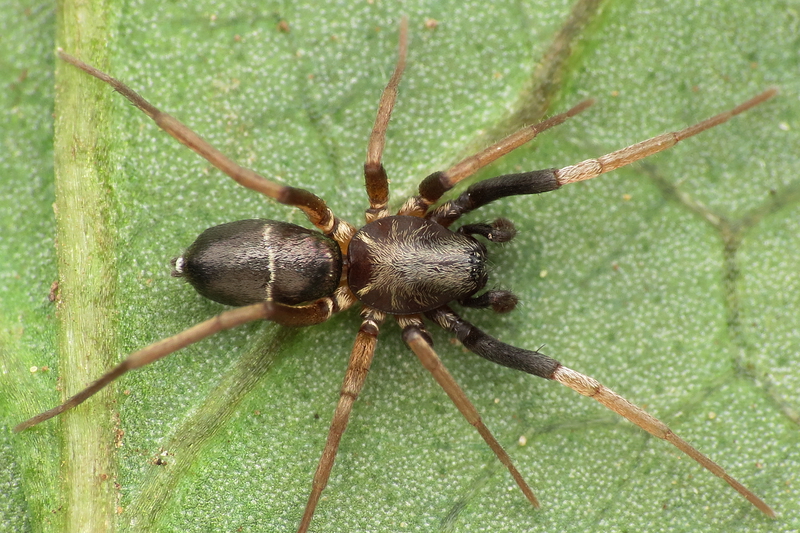
Small spiders in the genus Micaria sometimes look like ants, but this male wasn't fooling anyone!
More shots of him (and a link to a female) on BugGuide.
Fruit fly (genus Paracantha)
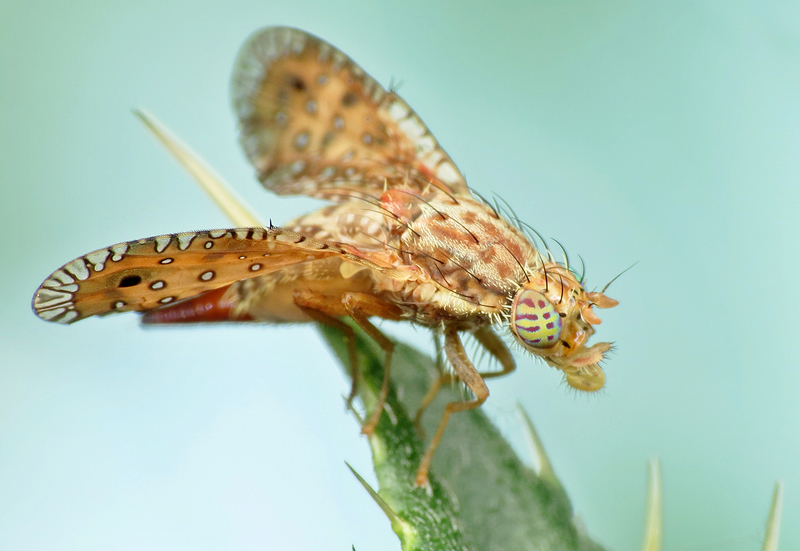
I found this picturesque fly perched on a thistle plant. It didn't seem to mind me hovering around with the camera.
Feeding time!
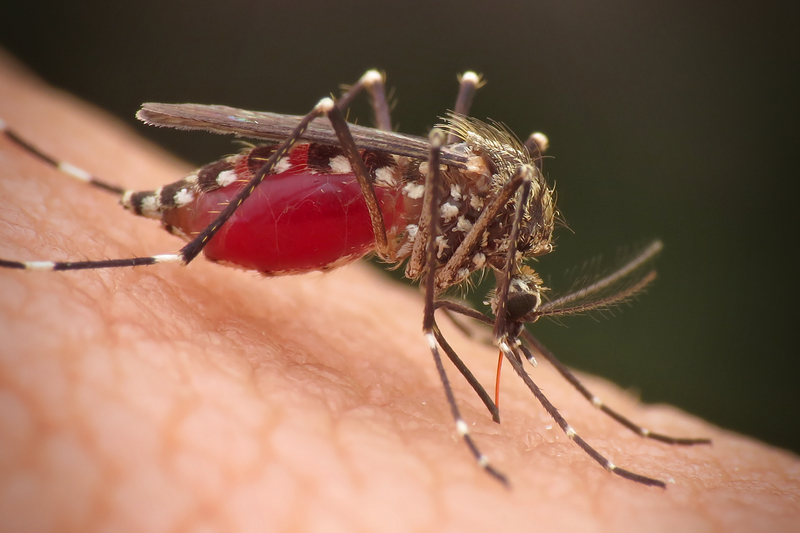
It seems that when I'd rather they not, mosquitoes will gleefully oblige themselves and steal a belly full of blood anyway. Yet when I encourage them to "bite" for a photograph, they just hover around pretending they're not interested! I had to sit in the middle of a cloud of over twenty mosquitoes before this one finally decided to try for a meal. Interestingly, when I let a mosquito take as much blood as it wants, the area around the bite rarely itches or swells.

